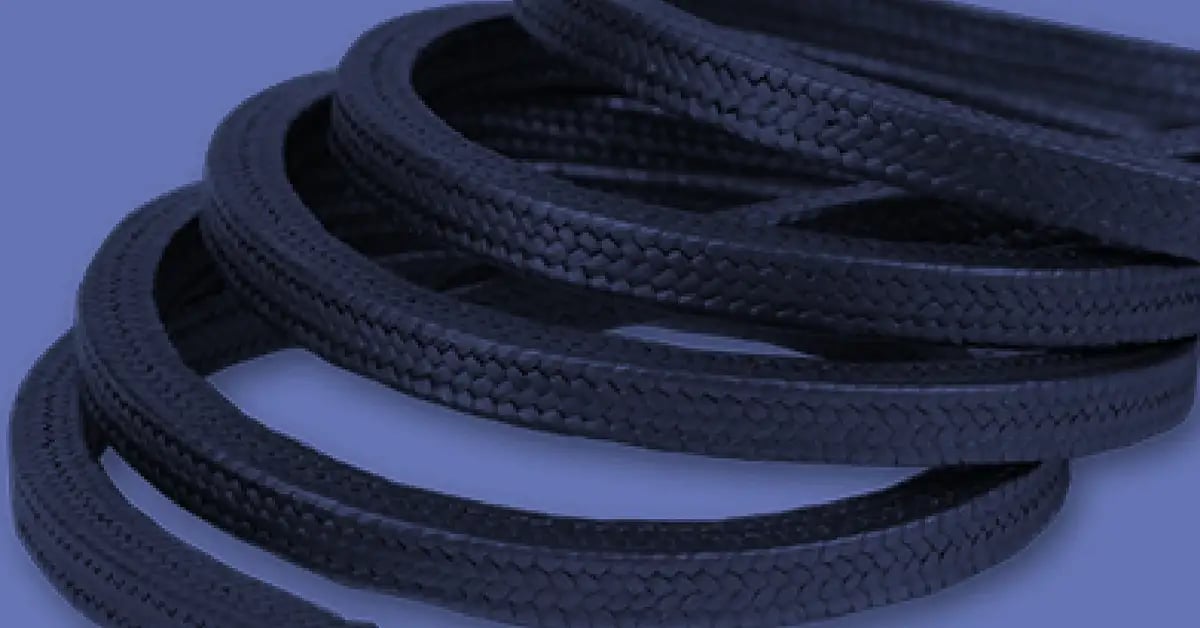The mechanical seal usually consists of several subsystems as shown by the figure below:
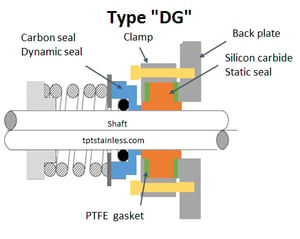 Attachment to the stationary body which typically relies upon elastomeric rings and metal components to form a static seal with the stator or mating face which is a stationary component and mate to its counterpart the rotor rotating with the shaft.
Attachment to the stationary body which typically relies upon elastomeric rings and metal components to form a static seal with the stator or mating face which is a stationary component and mate to its counterpart the rotor rotating with the shaft.- Similarly, there are components again including elastomeric rings that form a static seal between the shaft and the rotor or primary mating face.
- A method of creating an axial force on the Rotor and Stator pair creating the dynamic seal. This can be part of the Stator in the case of some Lip Seals, a simple spring in low duty applications, bellows springs for corrosive and high duty applications, etc. The pressure of the fluid being sealed can also be used to augment the previously mentioned approaches through the design of the Rotor which is often a Carbon/Graphite material.
- Materials selection.
- For stationary components this is usually dictated by cost and the seal environment in terms of temperature and fluid chemistry which could be acidic, basic, oxidative, corrosive, etc..
- Although cost is a factor in selecting the Rotor and Stator materials, the demands of the application are often a greater concern including temperature, fluid chemistry, presence of particulates, pressure, expected vibration which can be caused by a hydraulic hammer or cavitation, dry running survivability and resistance to thermal shock due to temporary and untended fluid flow interruption as a result of valve or operator failure, etc..
- Overall system design which is driven by
- Desired life
- Cost
- Differential pressure
- Fluid chemistry
- Temperature
- Permissible leakage rate of fluid being sealed
- Rotational speed
- Presence of abrasive particles in the fluid being sealed
- Reliability of seal installation and application operation, etc.
This variety of needs has evolved into different categories of seal designs which in many cases can be supported with carbon graphite materials.
These in turn fall into 3 categories
Category 1: Low Cost and Low Duty Seal Technology
Low duty seal requirements refer to low fluid pressure (generally < 100 psig), low fluid temperature (generally < 200 F), the absence of corrosive chemistry and abrasives, higher permissible leakage rates, etc. These factors allow for a simpler seal design and selection of lower cost components both of which permit simpler assembly along with installation requirements.
In some cases, the stator is the sealing material or component and the rotor is the shaft itself as in the case of packing and lip seals.
Packing Seals
These seals utilize an expensive compressible material (such as leather, felt, and polymeric materials) which fills the gap between the shaft and a surface at the lip of the pump and a mechanical component applies an axial force to partially compact the sealing material and forcing it to expand against the shaft and pump lip.
The axial force is generally applied by a packing gland follower which is tightened by axial and stationary screws. As the packing material wears with time the gland follower is further tightened to minimize leakage and extend the packing’s useful life.
Typically, such seals are used in older equipment, less developed nations, or low rpm and simple sealing applications. Again, due to such end user expectations as life, low maintenance, and low leakage rates the use of these seal types is diminishing.
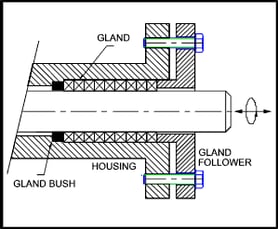 |
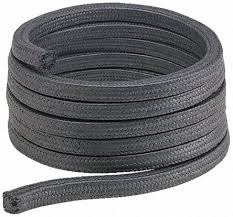 |
Image Source: https://roymech.org
Polymeric, elastomeric or metallic Lip Seals
These are inexpensive but low duty and used in commercial applications which operate at low pressures, low shaft rotational speeds, and higher allowance for leakage rate. The spring force for the seal is radial and can be generated by the lip seal itself due to deflection by being forced into place or a circumferential spring.
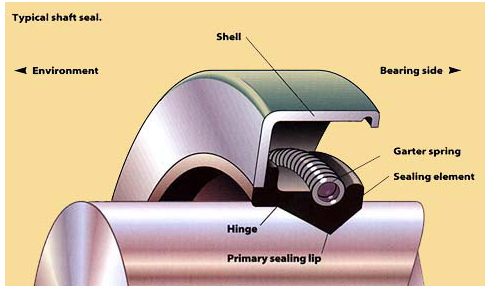 |
 |
Category 2: Medium to High Duty Applications Requiring a Multicomponent Dynamic Mechanical Seal
There are multiple types of mechanical seals within this category.
Resin Bonded Graphite Seals
Instead of relying on a carbon bonded component to form the seal these solutions use a resin bonded carbon graphite material which limits it sealed pressure, shaft rotation speed, operating temperature, chemical resistance, design due to its lower Elastic Modulus, resistance to abrasive particles, and wear rate.
These seals also use lower cost mating faces such as stainless steel or alumina. Such application include dishwashers, low duty pumps, etc. However, in many cases these applications have evolved to utilize higher duty materials as a result of user expectations for seal life and lower leakage rates.
Multi-Component Dynamic Mechanical Seals for Medium to High Duty Applications
Most if not all these applications share some basic principles.
- Each Seal has a stator which is sealed to the pump or mixer housing via an O-ring and a rotor which is sealed against the shaft via another O-ring.
- Both the rotor and stator have a surface which has been polished to typically 2 to 3 Light Bands flat (0.6 to 0.9 µm). These two faces are mated and rotate relative to each other creating the dynamic mechanical seal.
- A spring or bellows is also used to maintain the designed axial compression between the rotor and stator. Generally, the rotor will be designed to utilize the fluid pressure to augment the spring force.
Carbon graphite materials are widely used for these dynamic mechanical seals and are compatible with all mating faces including metals such as stainless steel, tungsten carbide, alumina, reaction bonded silicon carbide and self-sintered silicon carbide.
Because the application can be complex it is critical to obtain as many details as possible (pressure, velocity, fluid, temperature, free abrasive, mating face, etc.) to enable the best carbon graphite grade recommendation.
Because of the variety of pump and shaft sizes, operating environments, working fluids, pressure, temperature, and installation constraints there is a plethora of different perturbations of the afore mentioned dynamic mechanical seals to address these challenges.
Thus, it is the variety of seal designs and components that enable the variety of solutions for the diversity of application requirements.

Split Rotary Shaft Seals
Split Seals is a subset of dynamic mechanical seals where the seal consists of circumferential segments that are assembled around a shaft in the field which is required by difficulty and cost of removing the shaft to put a conventional seal in place.
These seals come in two flavors – Liquid and Gas seals.
As you can imagine a liquid split seal is more complicated and involves far more components but are an evolution of the dynamic mechanical seal discussed above.
Gas split seals are simpler in design using less components and almost exclusively utilize a carbon graphite material which is generally stationary and rubs against the shaft. It is critical that the material is self-lubricating and not gall, erode, or gouge the shaft.
Such seals are commonly used in gas turbine and compressor applications serving the industrial, energy generation, and aerospace markets. Shown below are a variety of Halo™ split seal carbon graphite components produced from proprietary materials by St. Marys Carbon.
 |
.png?width=198&name=split-seal%20(1).png) |
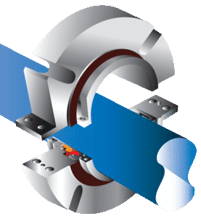 |
Image sources:
https://chestertonrotating.chesterton.com
Labyrinth Seals
Labyrinth Seals are actually two seals in one, both of which are satisfied by a carbon graphite ring. This ring has grooves machined on either the ID or OD (depending on the OEM’s design) which when rotation occurs air is channeled in the grooves and present a barrier to axial gas movement, this is the first and primary sealing mechanism.
The second mechanism is if the rotating shaft should deviate from its intended centerline the shaft will make contact with the carbon graphite material which is purposely selected to not gouge or damage the shaft.
These are most often used in high temperature environments including aerospace applications. This application is illustrated below.
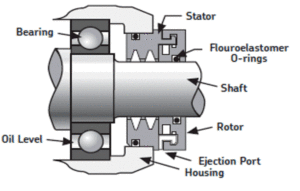 |
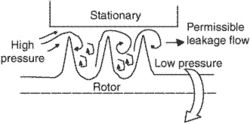 |
Image Source: https://www.turbomachinerymag.com
Image Source: https://encyclopedia2.thefreedictionary.com
Piston Ring Seals
Reciprocating pistons are commonly used to compress gas. Pistons require thin cross section rings which ride in piston grooves and are oversized and compressed when assembled so they will spring outward and seal against the cylinder in which the piston is reciprocating.
In conventional combustion engine applications metal piston rings are used. However, for high temperature applications that also require a self-lubricating piston ring carbon graphite is the material of choice.
Rotary Joint Seals
Rotary Joints are required when fluid flows to and from equipment that is also in motion. This is common for steam heating and heat transfer fluids used for heating such as hot oil heating systems. This a ubiquitous requirement for the paper industry.
A rotary joint typically consists of a metal convex spherical fitting which will mechanically seal against a concave spherical fitting typically produced from a carbon graphite material. These materials are self-lubricating and will not gall or scrape the more expensive and more difficult to replace metal face. The carbon fits into a metal holder and so is relatively easily replace when disassembled which hopefully is only performed during preventative maintenance scheduled shut-downs.
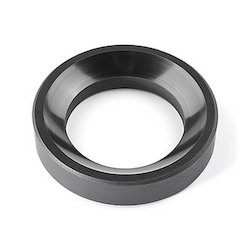 |
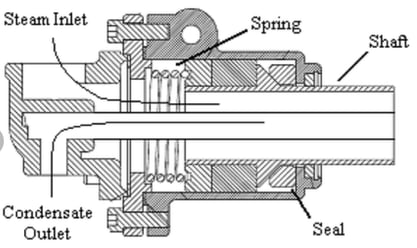 |
Image Source: https://www.researchgate.net
Category 3: Gas Seals for Ultra-High Duty Applications Requiring a Multicomponent Dynamic Mechanical Seal
Gas Seals have been developed for a broad temperature range and very high-pressure applications with high shaft speeds.
This technology relies on proprietary shallow groove patterns in the rotor which bring in a gas film of only a few microns to separate the rotor and stator and provide the lubrication and prevent the two faces from making contact as in many cases both are hard face materials and contact would be catastrophic.
The pictures below illustrate how this technology is applied.
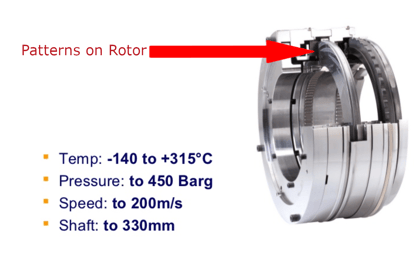 |
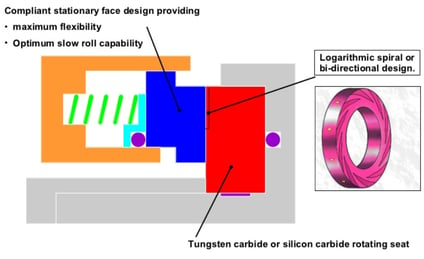 |
Image source: https://www.slideshare.net



